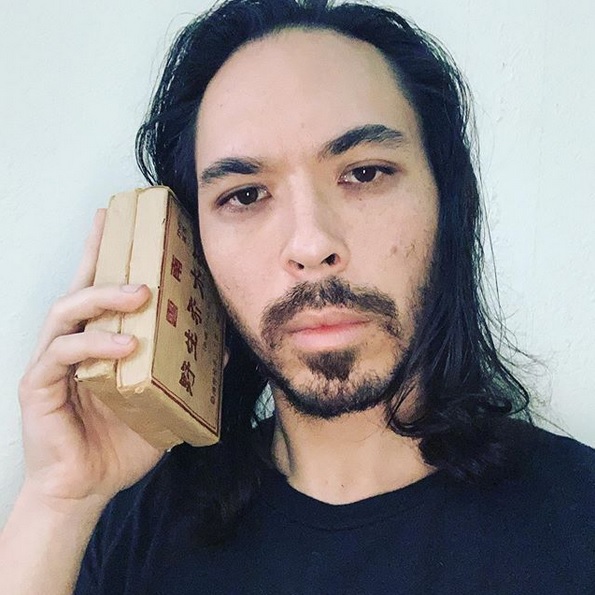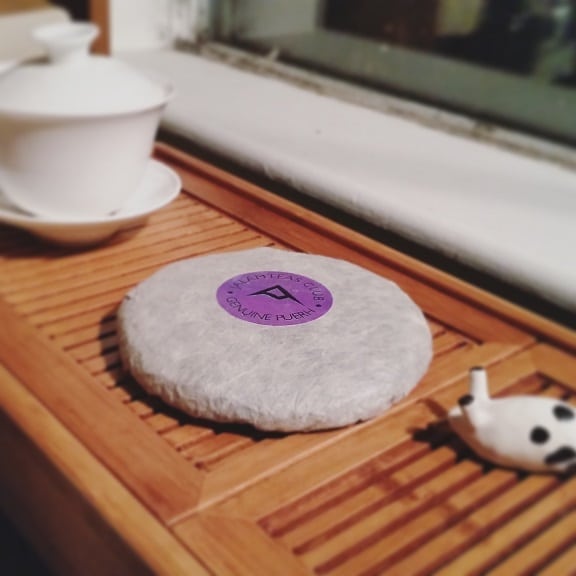Anyone that’s developed some sort of taste for tea starts to identify flavors with places. As palates develop, so do preferences for terroir – i.e. the characteristics tea plants take on based upon their geography. Where do Assams get their malt, or Darjeelings their muscatel notes? Why do Hawaiian teas tend to have fruit-sweet/tropical sensations on tongues? Part of the answer is where the tea is grown. I just so happen to have a favorite mountain.

Image mooched from JalamTeas.com
Back in ’05, I had no liking for pu-erhs at all. At. All. It took a raw pu-erh from an unassuming mountain located in Xishuangbanna, Yunnan province, China to convince me otherwise. I first had it in ’08; the tea was an ’05 – aged three years. It tasted like herbal wine with a dab of lemon. In mere moments, my palate changed. The words “Nan Nuo Shan” – “shan” meaning “mountain” – became a buzzword for me.
One could say that said tea was a fluke, but my foray into the tea review game proved otherwise. Every loose maocha (proto-pu-erh), sheng, beengcha (cake) and kitchen sink from that mountain had a profile that I liked. The best part? They could take a Western-style brew-beating. Before I even knew what “gongfu” was, I knew how much I liked teas from Nan Nuo.
I just didn’t realize how little I actually knew about the mountain until running across JalamTeas. For those that haven’t heard of them, they’re a relatively new pu-erh subscription service. Every month, they send out new pu-erhs from areas around Yunnan province. How can they possibly do that? you ask. Well, pipe down, I’ll tell you.
They have a man on the inside, or at least someone who visits Yunnan proper very frequently. I must say, I wasn’t familiar with author/mountaineer/explorer – Jeff Fuchs – before JalamTeas.

But the more I read, the more fascinated I became. To sum him up in Internet terms, he’s basically the Bear Grylls of tea.

He was the first Western explorer to cross the Ancient Tea Horse Road and the Tsalam. Never heard of the latter, but it has something to do with salt. A salt road, of some sort. I think. Moving along.
JalamTeas’s model was simple: Mr. Fuchs visits a place that produces pu-erh, he writes up a bio about said pu-erh, and then makes it available. Rinse, repeat, once per month. Brilliant, really. The tea bios themselves are rather in-depth, and sometimes video accompanies the write-ups and photos taken. Thus making the overall experience more well-rounded.
Fellow tea blogger – Nicole “Tea For Me Please” Martin, whom I seem to mention in a lot of my origin stories – did a write-up about JalamTeas’ March offering – a Nan Nuo beencha produced by the native Hani people of said mountain. That led me to zap an e-mail to JalamTeas HQ to acquire a tea cake.
I got both a reply from their Yunnan source – Jeff Fuchs himself – and from their co-founder – Allen Leftick. The replies were along the lines of:

Okay, maybe less Izzardian, but still…I was excited.
I received the – not one, but two – cakes in the mail following my return from World Tea Expo in June. And in true me-like fashion…I didn’t break into either cake until…um…several months later. Well, I was busy. Yes, I felt bad. But in November, I finally unwrapped one of ‘em. Yep, right before Thanksgiving. Same week, actually.
I had some difficulty getting the damn thing unwrapped. Although, to be fair, I was never good at unwrapping presents deftly. The brand sticker on the back wouldn’t let up, even for a slow tear. It took the pu-erh wrapping with it no matter what angle I chose to peel. The results were…well…expected.

That said, once I got it unwrapped, I was greeted by a lovely li’l beeng of compressed leaves – some lighter colored than others. The aroma was straight earth and wilderness dipped in sweet white wine. It smelled like how I expected it to, if not younger.

Using my pu-erh stabby-thingy (I still don’t know the proper name for it), I cut off roughly a tablespoon-sized chunk of the cake for brewing. JalamTeas recommended at least 8 grams of leaves per serving, but I didn’t have any way on-hand to measure that out exactly.
The infusion times were what I expected – short brew times (fifteen-to-twenty seconds to start), and add ten seconds to each additional steep. I went with three infusions to start with – the first at twenty seconds. Ten seconds for each additional; last one at forty. I sipped the pre-wash, but that was a bad idea.
After pouring three infusions, the first thing I noticed was a smell of grapes on the nose emanating from the cups. The second was the lack of difference in color in all three liquors. All were light amber and welcoming. No shift in shade. All three were spry, fruity to the palate, earthy, slightly grassy, and…young-seeming. At their current level of maturity, they tasted like a full-bodied Taiwanese green tea, rather than a pu-erh.

That is in no way a negative. Far from it. I’ve tasted a few young pu-erhs in my time. Some have a mature character right out of the starting gate, others feel rough and young. This one had character. It had all the right aspects of Nan Nuo Shan in play, but in the early stages. Even a novice pu-erh drinker could tell this was going to get better as years went on, but recognized its greatness early on. In short: A talented youngster.
A few days down the line, I even tore off a piece and took it to work with me. No proper gongfu brewing; just a tea travel mug with a mesh. It handled a neglectful Western approach perfectly. Not only that, it was thirst-quenching. Tea is many things, thirst-quenching ain’t one of ‘em.
If my first impression to a tea is “My God”…then it’s on the right path. I’m just glad JalamTeas gifted me with a second cake to revisit in a few years’ time. My gratitude is endless.



















